This article will give you great insight into where insurance premiums are headed in 2012……nowhere but UP!
The first-half results for property and casualty insurers are in and the results are not very pretty, as the industry reported more than a 71 percent drop in net income.
In a report issued by the Jersey City, N.J.-based Insurance Services Office (ISO), the Des Plaines, Ill.-based Property Casualty Insurers Association of America (PCI) and the New York-based Insurance Information Institute (I.I.I.), private U.S. P&C insurers’ net income fell to $4.8 billion for the first half of 2011 compared to $16.8 billion for the same period a year ago.
Driving the decline were net losses on underwriting, growing $19 billion to more than $24 billion for the first half of the year.
The total combined ratio for the carriers deteriorated 8.8 points to 110.5 for the first half of the year.
Catastrophes striking the United States in the first half of 2011 caused $23 billion in direct insured losses, before reinsurance recoveries, for all insurers, according to ISO’s Property Claim Services unit. That was up $14 billion from the same period last year. The number is three times the $7.7 billion average for first-half direct catastrophe losses during the past 10 years.
David Sampson, PCI’s president and CEO says, “Despite record-setting catastrophe losses from events like the deadly EF 5 tornado that struck Joplin, Mo. last May, insurers emerged from first-half 2011 financially sound and well able to continue providing essential financial protection to consumers and businesses alike—a quiet but important testament to insurers’ enterprise risk management and the effectiveness of state solvency regulation.”
Michael R. Murray, ISO’s assistant vice president for financial analysis says, “The 110.5 combined ratio for the first half of 2011 is the worst six-month underwriting result since the 111.1 combined ratio for first-half 2001. Even after adjusting for record catastrophe losses, the latest data indicates that insurers continued to face strong headwinds in their core business: underwriting.”
In his own commentary on the results, Robert P. Hartwig, president and chief economist for I.I.I., notes, “The [P&C] insurance industry turned in a weak performance during the first half of 2011. Although profitability slumped amid high catastrophe losses, premium growth remained positive, investment earnings were more robust than anticipated and policyholders’ surplus remained near its all-time record high.”
He adds that the outlook for the remainder of the year “is a cautious one given continued high third-quarter catastrophe losses, the prospect of high underwriting losses associated with non-cat losses and more uncertainty in the investment markets.”
The report says that deterioration in underwriting results is “largely attributable to a spike in net losses and loss adjustment expenses (LLAE) from catastrophes that totaled $24 billion, up from $8 billion in the first half of 2010.”
Partially offsetting the poor underwriting results, net investment gains grew $2.4 billion to $28.4 billion for the first half of 2011.
Net written premium rose $5.5 billion, or 2.6 percent, to $219 billion for the first half of this year.
Another measure of insurers’ financial health is policyholders’ surplus—insurers’ net worth measured according to Statutory Accounting Principles—fell $200 million to $559 billion.
Hartwig says that “fundamentally, the [P&C] insurance industry remains quite strong financially, with capital adequacy ratios remaining high relative to long-term historical averages.”
Murray notes that mortgage and financial guaranty insurers continue to “suffer disproportionate losses on underwriting” reflecting “weakness in the economy.”
Mortgage and financial guaranty insurers’ combined ratio improved 10 points to 186.3 for the first half of the year compared to the same period last year, says Murray, but the result was 76.9 points worse than the 109.4 combined ratio for the industry excluding mortgage and financial guaranty insurers.
The report is a consolidated estimate for all private U.S. P&C insurers based on reports accounting for at least 96 percent of all business written by them.
Related Articles
Florida ‘On the Right Track’ to Property Market Recovery Mass. AG Says Homeowners Rates Are Inflated; Criticizes Cat Models Travelers: Agents Say Clients Do Not Understand Fiduciary Exposure Congress Passes Another Short-Term NFIP Extension Insurer Catlin in Lloyd’s Venture with China Re Previous
Calif. Law Clarifies Agent/Broker Bond Requirements
Next
